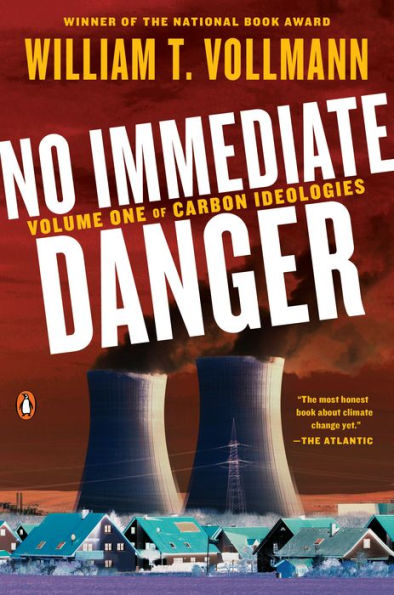Table of Contents
List of Maps and Illustrations xvi
0 When We Kept the Lights On 1
About* the "Primer" Section 17
About Tables 19
About Photographs 20
Primer
What Was the Work For? 25
Power Wastage by Group-Driven Machine Tools, ca. 1945 32
About Waste 33
Power Wastage During Machining Operations at an Unspecified Toyota Factory, ca. 2000 38
Power Wastage by Devices in Standby Mode, 2000-2010 41
About Demand 42
What Was the Work For? (continued) 44
Ratios of Per Capita Power Consumption to Per Capita Gross Domestic Product 51
Comparative Energy Requirements, in multiples of 1 British Thermal Unit I 55
About Power 60
Per Capita Power Consumption, ca. 1925 and ca. 2014, in multiples of the 1925 Japanese average 63
Comparative Power Requirements and Energy Usages, in multiples of what was needed per minute ca. 1975 to operate a plug-in vibrator 67
What Was the Work For? (continued) 76
Energy Required to Move an American Car One Mile, 1949 and 2010 76
Carbon Ideologies Approached 79
About Data 89
About Data Suppression 91
About Disbelief 93
"Consider It Good Fortune" 96
Carbon Dioxide Concentrations in Our Atmosphere, as Recorded at Mauna Loa Observatory in Hawaii, 1959 and 2004, in multiples of the 1959 value 96
Carbon Dioxide Emissions from Fuel Combustion, World and Selected Countries, 1971 and 2004, in multiples of the U.S. percentage increase over that period 98
Carbon Ideologies Defined 104
About Carbon 106
About Agriculture 111
The Three Most Dangerous Greenhouse Gases as of 2011, their percentage increases since 1750 and their percentages of total national emissions 120
About Industrial Chemicals 124
The Parable of Adipic Acid 128
About Manufacturing 132
Energy and Coal Requirements to Manufacture One Pound Each of the "Big Five" Materials, ca. 2013, in multiples of the energy needed for cement 134
About Transportation 143
The Three Most Dangerous Sectors of Human Activity, 2012-14 144
Maximum-Range Carbon Dioxide Emissions of Selected Aircraft, in multiples of the "Pampa" Argentine attack jet's (2003) 148
About Power Plants 150
Innate Energies versus Actual Electric Power Generated: Oil, Coal and Natural Gas, in multiples of the energy loss for oil (U.S.A., 2014) 152
Comparative Power Efficiencies, in multiples of lowest gas-turbine efficiency as of 1957 155
Power and Climate 158
Power Generation's Share of Greenhouse Gas Emissions for Selected Countries, 2007-14, in multiples of the 2012 European Union value 158
Primary Greenhouse Gas and Precursor Emissions from American Power Generation, 2014, in multiples of the value for nitrous oxide 159
About Solar Energy 161
Solar Energy En Route to Earth's Surface, by seasonal angular alterations and by atmospheric absorption and refraction, ca. 1957, 1976 161
About Greenhouse Gases 170
Comparative Carbon Dioxide Emissions of Power Plants, 2014, in multiples of those released by natural gas facilities 170
Comparative One-Century Global Warming Potentials, in multiples of carbon dioxide's 176
Comparative Responsibilities for Greenhouse Gas Emissions, 2007, in multiples of the figure for food production 188
About Fuels 189
Average Fuel Consumption in Moving One American Electric Light Rail Car One Mile, ca. 1979, in multiples of pounds of gasoline required 192
Carbon Dioxide Emissions of Common Fuels, in multiples of natural gas's (2007) 199
Carbon Dioxide Emissions of Common Fuels, in multiples of lignite's 200
Criticisms of Common Fuels, 1980-2012 205
Comparative Calorific Efficiencies, in multiples of the thermal energy of blast furnace gas 208
Nuclear
Nuclear Ideology 221
About Uranium 228
Calorific Efficiencies of Coal, Oil, Natural Gas, Uranium-235 and Plutonium-239, in multiples of the thermal energy of coal 234
About Nuclear Reactors 236
1 Lower than for Real Estate Agents 241
Comparative Measured Radiation Levels, 2014-15 (with Hiroshima readings from 2017), in multiples of lowest Sacramento interior reading 244
March 2011: When the Wind Blows from the South (Fukushima) 257
Carbon Dioxide Emissions from Fossil Fuels: Japan, U.S. and World, 1980 and 2011, in multiples of the 1980 Japanese value 275
February 2014: Harmful Rumors (Fukushima) 322
Relative Strontium-90 Concentrations in Perch Lake (Canada), 1963 342
October 2014, with a Hanford Excursion in August 2015: The Red Zones (Hanford, Washington; Fukushima) 396
Lowest and Highest Measured One-Minute Average Radioactivities in Selected Safe Cities, 2014-15 410
Concentrations of Radioactive Phosphorus at Hanford Nuclear Site, 1954-58 417
Other Concentration Factors at Hanford, 1954-58 417
Measured Radioactivities of Selected Drainpipes and Sewer Gratings, 2014-15 419
Comparative Average Radiation Levels, 2014, in multiples of the Sacramento average 425
Cesium Concentrations in Iitate Mushrooms, 2014 442
Cesium-137 Released in the World's Two Worst Nuclear Disasters 469
How Radioactive Was It? or, Extracts from an Official Website 487
Normalization on the Rocks 499
Lowest and Highest Radiation Measurements in Selected Red Zone Cities, 2014 502
Their Standard Is as Arbitrary as Ours: Some allowable cesium concentrations in food, Ukraine and Japan 506
Postscript: Japan Sees the Light 513
Global Distribution of Nuclear Reactors in 2014, with added statistics 513
Definitions, Units and Conversions 517
Table 1: Commonly Mentioned Radiocontaminants in Fukushima 537
Table 2: Other Isotopes of Interest 539
Radioactivity of Selected Library Interiors, 2014-15 542
Dosimeter and Frisker Readings at Various Dental X-Ray Settings, 2015 552
Multiples of Outdoor Background Level at Dentist's Office, 2015 553
Carbon Dioxide Emissions of Various Fuels When Producing 2013 American Winter Peak Electrical Load Capacity, in multiples of natural gas's 598
Acknowledgments 601




